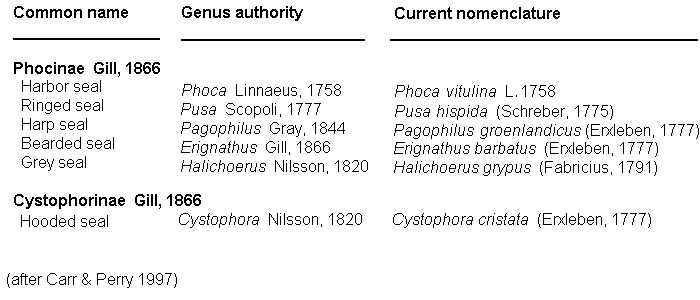
Nomenclature of Phocid seals: some examples of gamma taxonomy

Linnaeus introduced the scientific name Phoca vitulina for harbour seals in the 10th edition of Systema Naturae in 1758. To indicate that Linnaeus first described this species, the full scientific name is written Phoca vitulina Linnaeus, 1758. Linnaean names are often indicated only by the first letter of his name, in this case Phoca vitulina L., 1758.
Erxleben in 1777 subsequently described a number of new forms of seals, including the bearded seal, which he called Phoca barbatus. Gill in 1866, as part of a general re-examination of the taxonomy of seals, decided that the difference between these seals was great enough to warrant placing them in separate genera, and created a new genus name for the bearded seal, Erignathus. To indicate that Erxleben originally described this species, but in a different genus, his name is placed in parentheses: Erignathus barbatus (Erxleben, 1777).
Gill (1866) also divided the seal family Phocidae into three subamilies, the two found in the North Atlantic being Phocinae and Cystophorinae. To indicate these categorical ranks, the suffix -idae is used to indicate a family, the -inae suffix to indicate a subfamily.
Carr & Perry (1997) showed that harp seals are more closely related to Cystophora than they are to other phocine seals: harp seals should then be placed in the genus Pagophilus. Because genus & species names must agree in Latin gender, the feminine endings in the name Phoca groenlandica should be emended to the masculine Pagophilus groenlandicus.